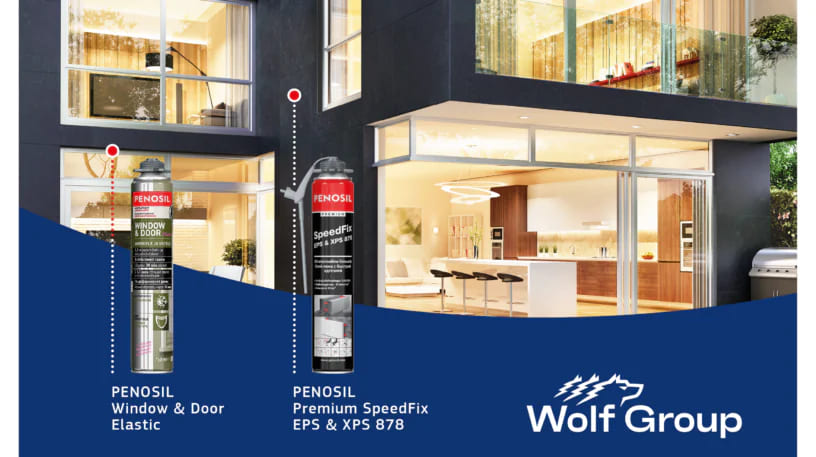Each sealed joint or filled crack ensures the airtightness and thermal insulation of the building.
There is a lot of talk about saving energy, but the key question is how or what to use to reduce energy costs. A simple solution seems to be to install an additional layer of thermal insulation in the building, but it is much more practical and cost-effective to close air leaks and avoid cold bridges.
Uncontrolled air leaks account for 25-40% of energy loss. A large part of heat loss occurs at the joints between windows and doors as well as through the roof, external walls, piping, ventilation and penetrations. Therefore, in order to achieve energy efficiency of buildings, it is necessary to build airtight and low thermal conductivity structures and avoid cold bridges.
Choosing the right sealing material and applying it correctly is crucial, as even the smallest cracks can mean significant heat loss and higher heating bills. Construction foam is unique in its properties because in addition to low thermal conductivity, it also ensures airtightness when used correctly. This gives a clear advantage over other classic insulation materials when sealing joints. Sealant, on the other hand, is not only airtight but also weatherproof. Using these products in a targeted way, energy-efficient and sustainable solutions can be achieved.
Wolf Group OÜ, formerly Krimelte, is constantly developing and testing products under its PENOSIL brand to achieve greater energy efficiency. Depending on the object or conditions, PENOSIL products can be used alone or as part of a solution. In connection with the European Union directive, according to which all new buildings completed in 2021 must be nearly zero-energy buildings, we have invested a lot in window installation solutions. Window assembly is one of the most complex construction installations, as many conditions must be met. To achieve energy efficiency, heat loss and the effects of cold bridges must be minimized and air tightness must be ensured. For the indoor climate of the building, the internal structures must be protected from excessive moisture and accidental moisture entering the structure must be able to evaporate without any problems. For the sustainability of the building, attention should be paid to the protection of internal structures from the impact of the weather. In order for the building to retain its aesthetic appeal, joints should only be filled with product that tolerates movement and deformation. It is important that the solutions last and that there is no need to maintenance every year.
Text: Kuldar Kongo, Head of Product Management, Wolf Group




